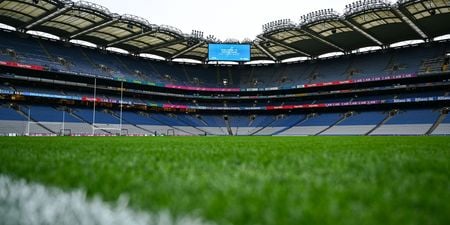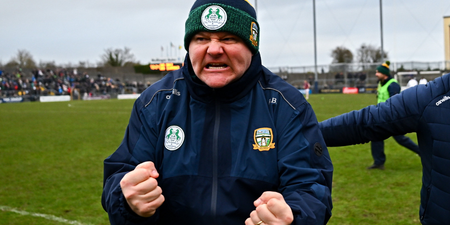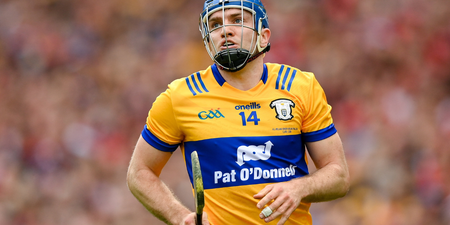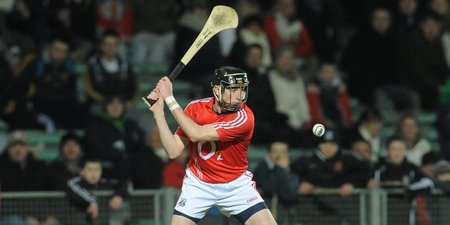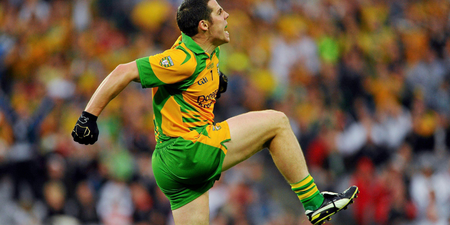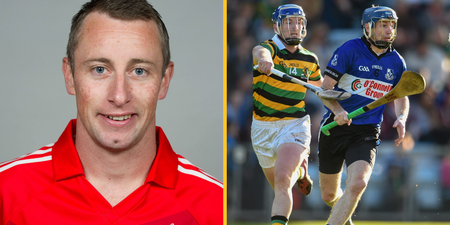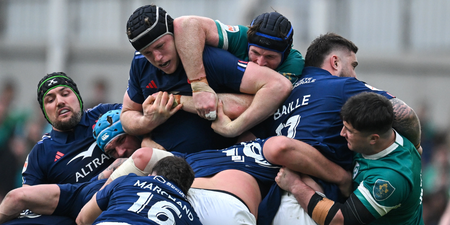We used to play this game with the U16 team back home called The Scoring Zone.
It was just your typical half-pitch backs and forwards scenario with just one alteration – you had to score from inside the marked zone.
Anyone from the attack pointlessly standing inside the area was penalised – he was just clogging up space.
Anyone taking a wild shot from outside the area was penalised – he was leaving too much to chance.
When you entered the scoring zone, you entered it with purpose, with drive and with only one intention of getting the ball and popping it over as quickly as you could. No nonsense.
It made things easier, more methodical, it gave the team a clear objective going forward. And all it really did was just deliberately point out where their shooting position was and where it most definitely was not.
Likewise though, there was a word put in each of the defenders’ ears that anyone entering that red zone is fair game. Anyone in there was a direct assault to all that the backs stood for. And anyone with a ball inside that zone – your zone – had to be treated with complete contempt.
Outside? Fine. Let them go, let them shoot. Even applaud them when they score with a pot shot happy in the knowledge that they’ll never win the game doing that.
Donegal get the concept of the scoring zone better than anyone. Any player daring to cross that divide between non-threatening and threatening is absolutely hounded. But, more importantly they understand that they need to get into the opposition area going forward.
They do not muck around like so many other teams do when they come up against a wall of defenders.
Donegal never took on one shot from outside of the scoring zone during their first half against Tyrone on Sunday. They scored nine of their 15 attempts in an economical 35 minutes whereas Tyrone offered a return of seven successful shots from 18.
60% plays 39%.
The Red Hands’ decisions were much more sporadic, less methodical and, although they got inside more times than you’d probably have wagered, they found themselves under serious scrutiny in the danger area.
Peter Harte, for example, turned the ball over 40 metres from goal; by the time he had reached the 21′, he had Michael Murphy – yes, Michael Murphy – hanging off him with Neil McGee at the other side. He ended up coughing up the ball and slicing a desperate scuffed effort that didn’t even reach the end line.
And even at that, there were more men still there waiting to pounce on him – even after a mistake from the defence.
 Donegal might have let Tyrone enter on occasion but the white shirts never waltzed in unmarshalled.
Donegal might have let Tyrone enter on occasion but the white shirts never waltzed in unmarshalled.
Tyrone, on the other hand, despite their blanket defence, were leaking players in unforgivable areas.
Here they are with 14 men in their own half of the field yet Christy Toye has a good 15 and 20 metres in either direction of him to pick up a simple kick pass and turn and swing it over.
It gets worse. Odhrán Mac Niallais (circled) is actually the attacker there. He’s not a sweeper, he’s attacking.
Odhrán Mac Niallais (circled) is actually the attacker there. He’s not a sweeper, he’s attacking.
In the picture alone, showing just one side of the field, there are 11 Tyrone men between the 21′ and the 45′ – on one half of the pitch.
Yet, somehow, Mac Niallais is standing unmarked on the 13-metre line in what was actually a pretty laboured build-up from Donegal. And that was when the visitors had a lead to protect going in at the break.
In contrast, Donegal got a lead again in the second period and shut the game out. They kept Tyrone scoreless for the final 20 minutes and they had Michael Murphy when it was needed.
Whilst the side was technically more wasteful in the second period, three of their six missed chances were gilt-edged goal opportunities.
Four shots from outside the scoring zone but two of those were set pieces from Michael Murphy and, well, Man Child does what he wants and he scores from where he wants.
Tyrone were still wayward with their decisions after the break.
Conor McAliskey led the way in the second period with two scores from play right in the heart of Gallagher’s defensive setup.
Donegal were more effective at forming their dome and forcing wild shots from the opposition but they were also leaking uncharacteristic opportunities and, actually, had McCurry not been so wasteful, had the cross bar been an inch or two higher, Tyrone would’ve forced a draw or even won the game.
In the end, it wasn’t Donegal’s defence that saw them through. It was their economical attack and that attack was driven by one man – one man from the back.
Frank McGlynn – the relentless Frank McGlynn – was the driving force of Donegal. He was directly involved in five of their 14 scores, he set up a goal chance and might have had his own goal if it wasn’t for the faintest of interventions from a Tyrone boot.
If you see Donegal’s number seven bearing down on you, you should be fully prepared for the very real fact that they will be entering your scoring zone. And what they do from there is usually enough.











